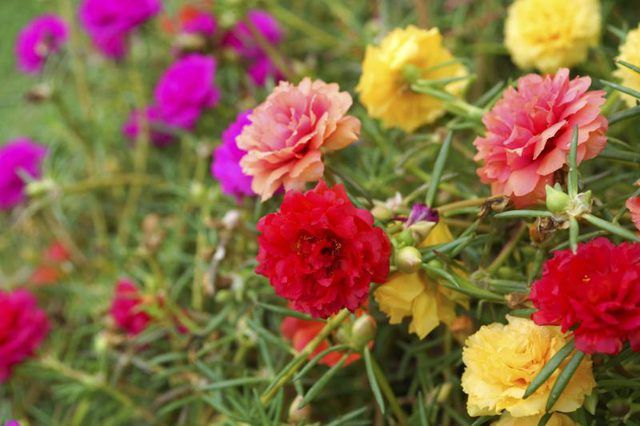Bulbs
Flower Basics
Flower Beds & Specialty Gardens
Flower Garden
Garden Furniture
Garden Gnomes
Garden Seeds
Garden Sheds
Garden Statues
Garden Tools & Supplies
Gardening Basics
Green & Organic
Groundcovers & Vines
Growing Annuals
Growing Basil
Growing Beans
Growing Berries
Growing Blueberries
Growing Cactus
Growing Corn
Growing Cotton
Growing Edibles
Growing Flowers
Growing Garlic
Growing Grapes
Growing Grass
Growing Herbs
Growing Jasmine
Growing Mint
Growing Mushrooms
Orchids
Growing Peanuts
Growing Perennials
Growing Plants
Growing Rosemary
Growing Roses
Growing Strawberries
Growing Sunflowers
Growing Thyme
Growing Tomatoes
Growing Tulips
Growing Vegetables
Herb Basics
Herb Garden
Indoor Growing
Landscaping Basics
Landscaping Patios
Landscaping Plants
Landscaping Shrubs
Landscaping Trees
Landscaping Walks & Pathways
Lawn Basics
Lawn Maintenance
Lawn Mowers
Lawn Ornaments
Lawn Planting
Lawn Tools
Outdoor Growing
Overall Landscape Planning
Pests, Weeds & Problems
Plant Basics
Rock Garden
Rose Garden
Shrubs
Soil
Specialty Gardens
Trees
Vegetable Garden
Yard Maintenance
How to Plant Portulaca
How to Plant Portulaca. A creeping plant 3 to 10 inches tall, which blooms whenever the sun shines during summer and early autumn, portulaca (Portulaca spp.) makes vividly-colored single or double 1- to 3-inch flowers similar to those of cacti blossoms. Its succulent foliage resembles 1-inch plump conifer needles for moss rose (Portulaca...

A creeping plant 3 to 10 inches tall, which blooms whenever the sun shines during summer and early autumn, portulaca (Portulaca spp.) makes vividly-colored single or double 1- to 3-inch flowers similar to those of cacti blossoms. Its succulent foliage resembles 1-inch plump conifer needles for moss rose (Portulaca grandiflora) and 1 1/2-inch flat ovals for purslane (Portulaca oleracea). Although moss rose can be hardy in U.S. Department of Agriculture plant hardiness zones 10 through 11, and purslane in USDA zones 9 through 11, the plants usually are grown as warm-season annuals. When planting them, remember their preference for dry conditions.
Sun Stipulation
The original moss roses only bloomed in the morning on sunny days, closing during the afternoon and remaining closed all day during cloudy weather. A few more modern cultivars, including "Afternoon Delight," "Sundance" and "Sunseeker," stay open for at least part of the afternoon as well.
The Pazzazz series of purslane reportedly also boasts flowers which close later in the afternoon than most. Its iridescent colors include, among others, "Red Flare," "Salmon Glow" and "Ultra Pink."
Site Selection
Portulacas require a position in full sun and actually prefer poor soil, which is dry, sandy and somewhat low in fertility, for the best bloom. They may grow more vigorously in richer ground, but won’t produce as many flowers there.
Select such a site after your area’s last spring frost, when temperatures have risen to between 68 and 86 degrees Fahrenheit. If the ground in your garden bed is heavy clay, dig 2 inches of compost into its upper 8 inches to lighten its texture, and till or rake the bed thoroughly to a fine consistency. Should you plan to grow portulaca in a container instead, choose a fast-draining soil such as cactus potting mix, also ensuring the container has drainage holes.
Seed Sowing
After moistening the soil, sprinkle portulaca's tiny seeds thinly over its surface, pressing them into that surface without covering them. If you keep their soil damp, the seeds should germinate within seven to 14 days.
Thin or transplant your seedlings -- or purchased ones -- so that they stand 5 to 8 inches apart.
Seedling Succor
While the seedlings are young, water them frequently enough that their soil remains lightly damp. Once well established, portulaca plants are drought tolerant and should require little irrigation.
Water those in the ground only when their soil is dry 1 inch down and those in containers when the top of their mix feels dry. Use a soaker hose or a watering can with a spout which can be inserted beneath the foliage, since water falling on the plants from above may cue the flowers to close.
If you must mulch the plants, choose a dry type of mulch such as fine gravel.